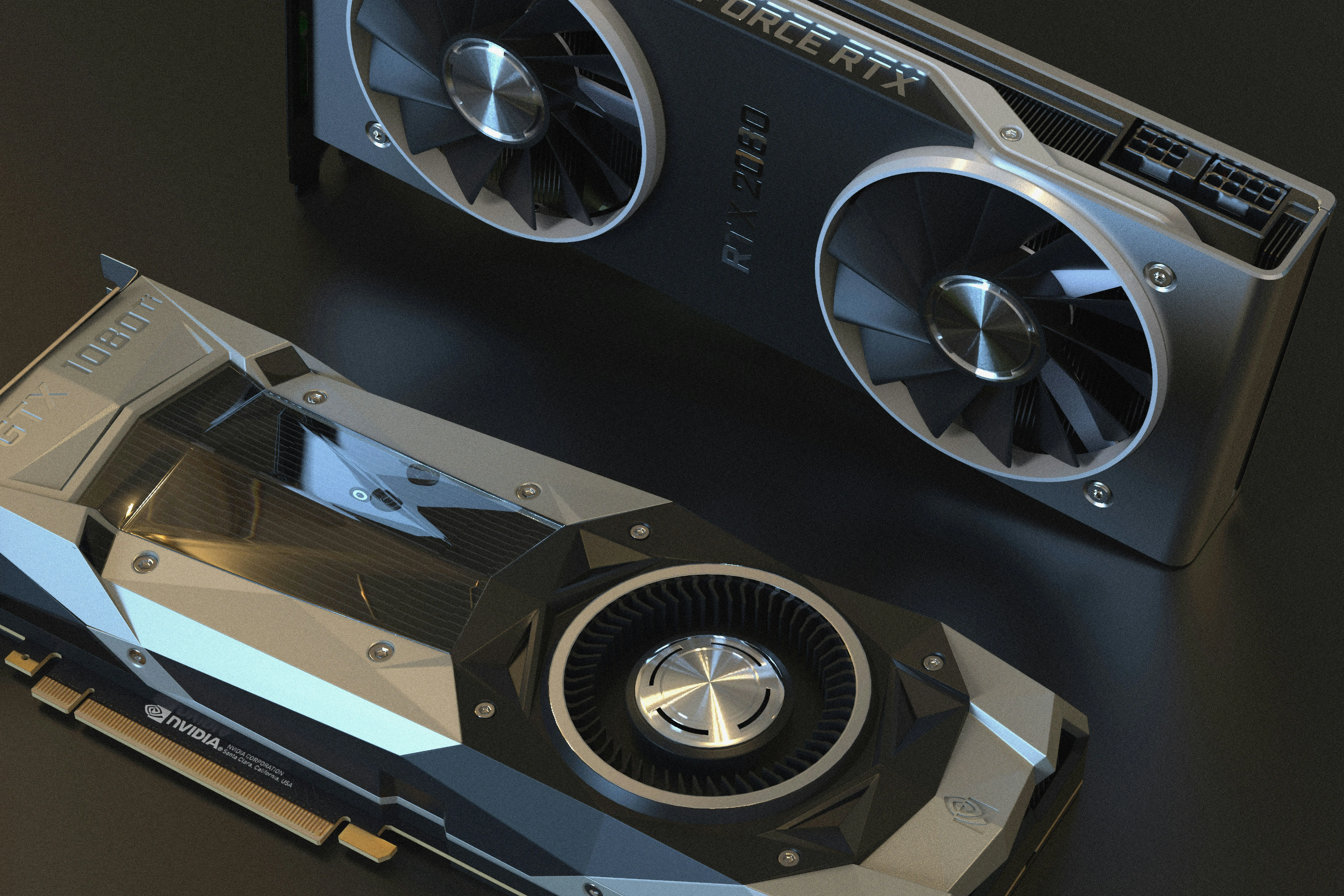Meet the David that just took down Goliath. A hardware enthusiast has achieved something extraordinary: pushing Nvidia's entry-level RTX 5050 beyond its intended limits, creating a budget beast that outperforms the legendary GTX 1080 Ti while dominating 3DMark leaderboards. This isn't just another overclock story — it's proof that modern budget hardware, in the right hands, can rewrite the rules of price-to-performance.
What you need to know: • One modder pushed the RTX 5050 to an incredible 3300MHz, achieving a 28% clock speed increase over stock settings • This overclocked budget card now outperforms the GTX 1080 Ti, a GPU that once cost nearly four times more at launch • The achievement netted the modder the top six scores in 3DMark Time Spy, showcasing consistent, repeatable results
The $250 underdog that nobody saw coming
Here's the thing: when Nvidia announced the RTX 5050 with its $250 MSRP, most enthusiasts wrote it off as just another budget option destined for 1080p mediocrity. The card packs 2560 CUDA cores and 8GB of GDDR6 memory — respectable specs for the price point, but nothing that screams "performance monster" on paper.
What makes this budget positioning particularly interesting is how the RTX 5050 slots into today's competitive landscape. The RTX 5050's 130W power consumption during gaming makes it accessible to older systems, while its 56% performance increase over the RTX 3050 provides solid 1080p gaming. Intel's Arc B580 and AMD's RX 7600 XT are about 5% faster at stock settings — but that competitive dynamic completely changes when overclocking enters the equation.
The beauty of the RTX 5050 lies in its efficient GB207 chip architecture, which builds directly on that low power consumption foundation. With a die area under 150 mm², this tiny powerhouse runs cool enough to handle serious overclocking without exotic cooling solutions. That thermal efficiency combined with Blackwell's improved power delivery created the perfect storm for this record-breaking overclock.
Why Blackwell GPUs are overclocking monsters
Sound familiar? If you've been following the RTX 50-series launch, you'll notice a pattern emerging across the entire product stack: these cards love to be pushed beyond their factory settings. Igor's Lab found that RTX 50-series cards typically handle 275-350MHz core overclocks without breaking a sweat, with exceptional examples remaining stable up to 450MHz above base clock.
What separates Blackwell from previous architectures isn't just raw capability — it's the efficiency of that overclocking headroom. The new GDDR7 memory found in higher-tier cards is "extremely overclockable," with most samples hitting at least 2000MHz in MSI Afterburner. Even the RTX 5050's GDDR6 memory benefits from Nvidia's improved power delivery and thermal design that defines the Blackwell generation.
PRO TIP: Blackwell cards show minimal power consumption increases during overclocking. Igor's testing revealed only 20-30 watts of additional consumption at 430MHz core and 2000MHz memory overclocks — making aggressive tuning surprisingly practical for daily use.
This efficiency advantage becomes even more striking when you consider the broader overclocking ecosystem. ASUS overclocker Safedisk recently hit 3480MHz on an RTX 5090 under LN2 cooling, while this modder achieved 95% of that frequency (3300MHz) on budget hardware with conventional cooling. That's not just impressive — it suggests Blackwell's overclocking potential scales remarkably well across the entire product lineup, from flagship to budget.
The 3DMark massacre: how six records fell
Let's break down what actually happened in those benchmark runs, because achieving the top six scores in 3DMark Time Spy represents something far more significant than a lucky run. The systematic nature of securing six consecutive top scores demonstrates the repeatability and stability of this overclock — hallmarks of genuine engineering achievement rather than silicon lottery luck.
The 28% clock speed increase over stock settings translated into real, measurable performance gains that fundamentally change how we think about budget GPU potential. This achievement puts the overclocked RTX 5050 alongside some genuinely elite results — for context, typical RTX 5050 overclocks yield around 12% real-world performance gains. The modder's 3300MHz achievement represents more than double the normal overclocking benefit, pushing into territory usually reserved for extreme cooling experiments.
The GTX 1080 Ti comparison makes this achievement historically significant. When that card launched in 2017 at $699, it represented the absolute pinnacle of gaming performance — the GPU that could handle 4K gaming and stayed relevant for years. Seven years later, a $250 budget card can match or exceed its performance with creative tuning. That's not just Moore's Law at work — it's a fundamental shift in what's possible at different price points, especially when factoring in modern overclocking potential that simply didn't exist in Pascal-era hardware.
The consistency of achieving six top scores suggests this modder has developed a methodical approach to maximizing Blackwell's overclocking architecture, creating a blueprint that other enthusiasts might be able to adapt for their own systems.
What this means for budget builders everywhere
Now here's where things get really interesting for everyday builders who aren't planning to chase world records. While extreme overclocking will always be a niche pursuit, this achievement illuminates something important about modern budget GPU potential that extends far beyond headline-grabbing benchmark scores.
The timing of this RTX 5050 overclocking breakthrough creates fascinating implications for the competitive budget GPU landscape. At $250 MSRP, the RTX 5050 sits in direct competition with Intel's Arc B580 and AMD's RX 7600 XT, both of which are about 5% faster at stock settings. But when you factor in Blackwell's overclocking headroom — even at moderate levels far below this extreme achievement — the value proposition shifts dramatically in favor of the Nvidia option.
PRO TIP: Even conservative overclocking on RTX 50-series cards can yield significant results. If typical users can achieve even half of what this modder accomplished, that's still a 14% performance boost — enough to turn the RTX 5050 from slightly behind its competition to meaningfully ahead.
The broader implications extend into GPU manufacturer strategies around power limits and thermal design. We're seeing evidence across the RTX 50-series that Nvidia has intentionally left substantial performance on the table through conservative factory settings. RTX 5080 cards routinely achieve 11-12% real-world performance gains from overclocking, while RTX 5090s show similar scalability. This suggests the entire Blackwell lineup has been designed with overclocking headroom as a feature rather than an accident.
Don't Miss: While extreme overclocking will void your warranty according to manufacturer specifications, the RTX 5050's achievement demonstrates that even budget Blackwell cards offer exceptional tuning potential for enthusiasts willing to explore beyond stock settings.
The future belongs to the bold (and budget-conscious)
This RTX 5050 overclocking triumph represents more than impressive benchmark scores — it's a reminder that peak performance doesn't always require peak pricing, especially when modern architecture meets dedicated enthusiasm. When a committed modder can coax GTX 1080 Ti-beating performance from a sub-$300 GPU, it demonstrates that the real bottleneck often isn't the silicon itself, but our willingness to discover its hidden potential.
The achievement also validates something we've been seeing across the entire RTX 50-series: overclocking is genuinely worthwhile with these cards in ways that weren't always true with previous generations. Whether you're running a flagship RTX 5090 or this plucky RTX 5050, Blackwell architecture seems purpose-built to reward those willing to push boundaries — a philosophy that could reshape how we think about GPU price-to-performance ratios across all market segments.
For the broader modding community, this success story serves as both inspiration and proof-of-concept. While not everyone will achieve 3300MHz clocks, the methodology and results demonstrate that budget hardware can deliver enthusiast-level experiences when paired with the right knowledge and dedication. That's a lesson worth remembering as GPU prices continue climbing and builders look for ways to maximize every dollar of their hardware investment.





















Comments
Be the first, drop a comment!